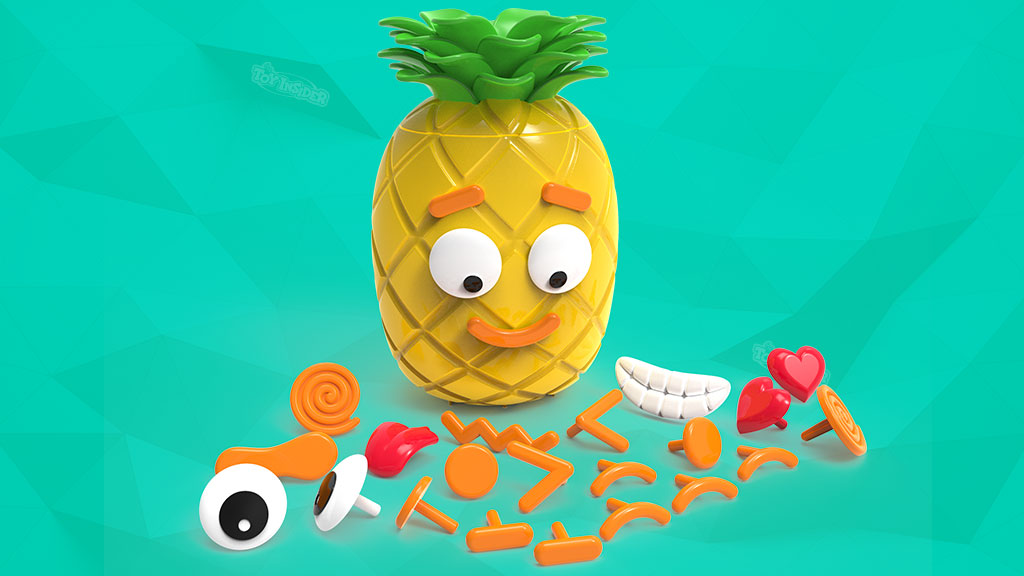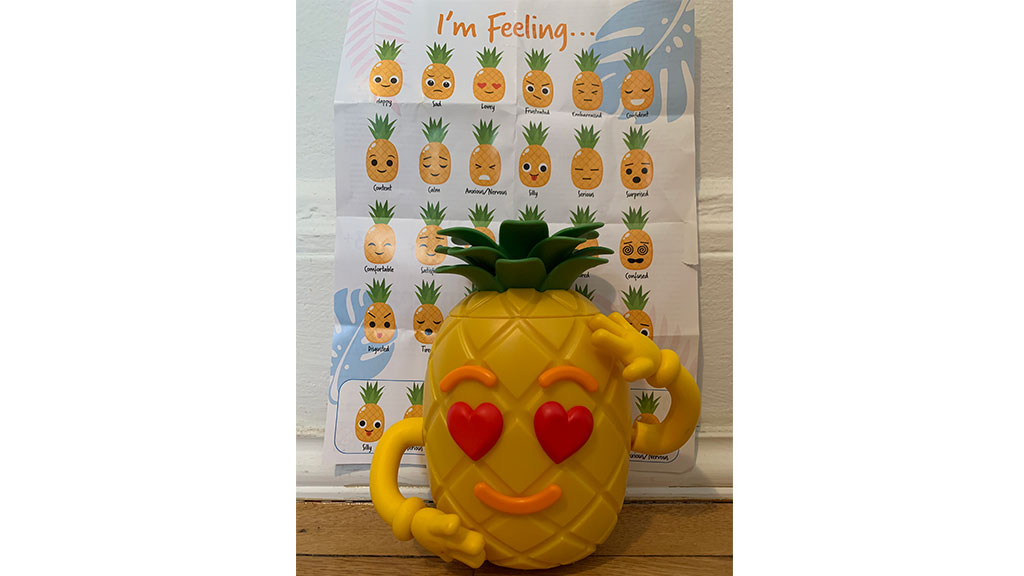
If you’re happy and you know it — tell your new pineapple friend!
The Big Feelings Pineapple from Learning Resources helps kids learn about emotions through hands-on play and activities that they can do with their parents. The small, plastic pineapple comes with 26 body parts — arms, eyes, eyebrows, and mouths — that kids can place on it in order to represent emotions.
Parents can let kids take charge and just place the pieces wherever they’d like or they can get in on the fun with a number of activities. The booklet that comes with this pineapple — kids can name it themselves, but I called mine Peter — helps parents think of creative ways to get kids talking about their emotions and understanding them.
One suggested way to play is to make short sentences and let kids say what emotion would go with it and then model it on the pineapple. For example, I could say Peter the Pineapple is starting preschool next year, he’s feeling _____. Kids could answer scared, nervous, or maybe even happy or excited. Then they can make Peter (or whatever they named their pineapple) match that feeling. There’s a guide on the back of the instruction sheet that shows how each emotion can be depicted.

It may be helpful to go over this guide before heading on to making sentences. There are 24 emotions shown and each one can be mimicked on the pineapple with the parts included. Parents can say the name of the emotion, match their facial expression to it, and then ask kids to make their pineapple show that emotion as well. They can also test kids on their knowledge of emotions by only making the face and having them recreate it on the pineapple before telling them what it is. The pineapple is double-sided so kids can put two emotions on it at once and practice their opposites.
Fair warning, teaching young kids about emotions may lead to a 3-year-old running around the house yelling, “happy!” but that’s just adorable. Plus, teaching kids while they’re young about their emotions and how to share them will make them better adults in the future.
Another activity that Learning Resources recommends is to name the emotions one at a time and have kids make their pineapple feel that same way. The pieces are easy for little fingers to replace and rearrange over and over again, so they can get all the feels in. Parents will be happy to know that after playing, all of the pieces store inside the pineapple so there’s no chance of accidentally stepping on a smile one day.
Who knew pineapples could be so sweet?
